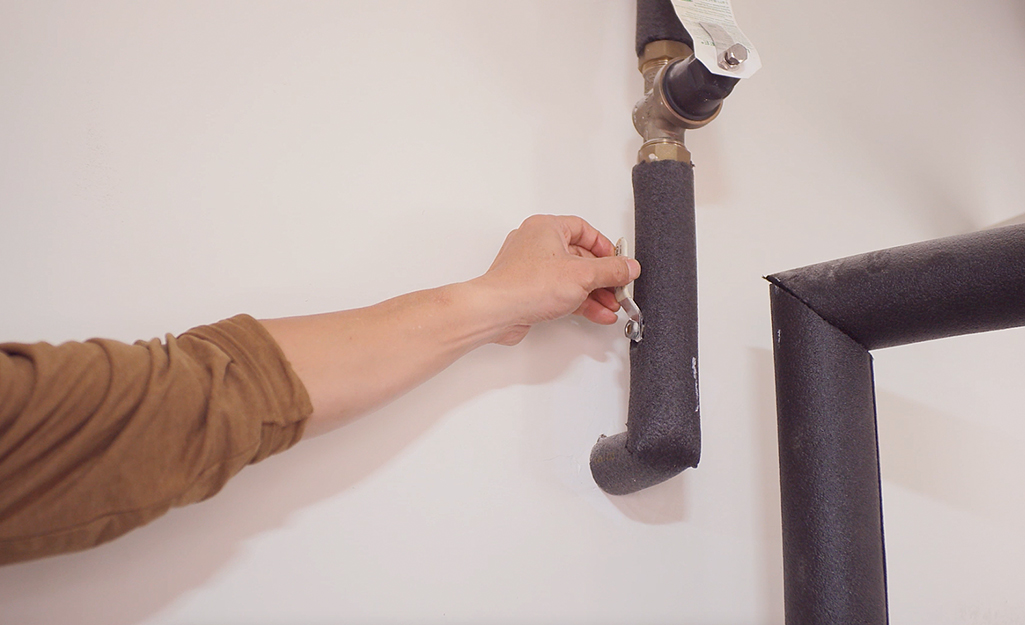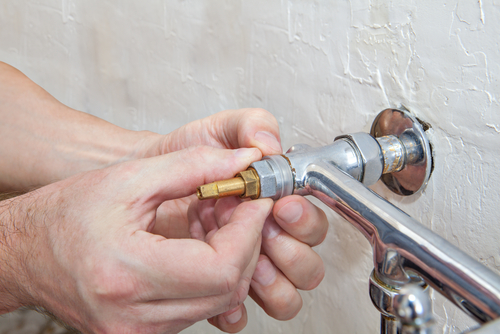How do you really feel in regards to Why Are My Faucets Dripping (And Can I Fix It Myself)??

Leaking taps may seem like a small hassle, yet their impact exceeds simply the nuisance of the audio. From wasting water to incurring unneeded economic costs and health dangers, neglecting a leaking faucet can cause numerous consequences. In this write-up, we'll delve into why it's important to address this usual family problem quickly and efficiently.
Wastefulness of Water
Environmental Effect
Trickling faucets add substantially to water wastefulness. According to the Epa (EPA), a single faucet dripping at one drip per second can lose greater than 3,000 gallons of water annually. This not only pressures water sources yet also affects ecosystems and wild animals based on them.
Financial Costs
Enhanced Water Expenses
Beyond the environmental effect, leaking faucets can pump up water expenses considerably. The gathered waste gradually converts into higher energy expenses, which could have been stayed clear of with prompt repairs.
Prospective Property Damages
Moreover, extended leaking can lead to damage to components and surface areas bordering the faucet. Water build-up can trigger staining, deterioration, and even architectural problems if left unattended, causing added repair prices.
Health Issues
Mold and Mildew Development
The continuous existence of wetness from a dripping tap produces a suitable atmosphere for mold and mildew development. These fungi not just compromise interior air high quality but also pose wellness threats, particularly for individuals with respiratory problems or allergies.
Waterborne Diseases
Stagnant water in dripping faucets can come to be a breeding place for microorganisms and other virus, enhancing the threat of waterborne illness. Pollutants such as Legionella germs flourish in stationary water, possibly bring about major health problems when ingested or inhaled.
DIY vs. Expert Repair work
Benefits and drawbacks of DIY Repair Work
While some might try to repair a trickling faucet themselves, DIY repairs include their very own collection of obstacles. Without appropriate knowledge and devices, do it yourself attempts can exacerbate the concern or result in insufficient fixings, prolonging the issue.
Advantages of Working With an Expert Plumber
Working with a professional plumber makes certain that the underlying cause of the dripping tap is attended to properly. Plumbers possess the know-how and equipment to identify and fix tap issues successfully, conserving time and minimizing the danger of more damage.
Step-by-Step Guide to Taking Care Of a Dripping Faucet
Tools Called for
Prior to trying to take care of a trickling tap, collect the required tools, consisting of a flexible wrench, screwdrivers, replacement parts (such as washers or cartridges), and plumber's tape.
Common Tap Issues and Their Solutions
Recognize the sort of faucet and the specific problem causing the drip. Common troubles consist of damaged washers, corroded shutoff seats, or defective O-rings. Refer to supplier instructions or online tutorials for detailed advice on repairs.
Safety nets
Regular Maintenance Tips
To prevent dripping faucets, perform regular maintenance such as cleansing aerators, examining for leakages, and replacing damaged parts immediately. In addition, think about setting up water-saving gadgets or updating to more effective components.
Significance of Prompt Repair Works
Attending to trickling faucets as soon as they're discovered avoids additional water wastage and prospective damage, eventually conserving both water and cash in the future.
Effect On Residential Or Commercial Property Worth
Perception of Well-Maintained Property
Maintaining a residential or commercial property in good condition, including dealing with maintenance problems like leaking taps, boosts its perceived value and worth among potential purchasers or lessees.
Influence on Resale Value
Residences with well-maintained plumbing fixtures, consisting of taps, command greater resale values in the realty market. Dealing with dripping taps can add to a favorable impression throughout home assessments and settlements.
Environmental Responsibility
Individual Contribution to Preservation
Taking duty for dealing with dripping taps straightens with more comprehensive initiatives towards water preservation and ecological sustainability. Every individual's actions jointly make a substantial influence on maintaining priceless sources.
Lasting Living Practices
By focusing on prompt fixings and embracing water-saving practices, individuals contribute to sustainable living practices that profit both existing and future generations.
Conclusion
Dealing with a leaking faucet goes beyond mere convenience; it's a crucial action towards conserving water, reducing economic expenses, and protecting wellness and home. Whether with DIY fixings or professional assistance, acting to repair dripping faucets is a small yet impactful way to advertise accountable stewardship of resources and contribute to a much healthier, more sustainable future.
How to Fix a Leaky Faucet: Step-by-Step Repair Guide
A leaky faucet may seem like a simple annoyance, but if it's not fixed promptly, that leak could cost hundreds to potentially thousands. From water damage to mold, mildew, and high water bills, even a tiny leak can be catastrophic if left unattended. Damage like this can even affect the overall value of your home, so it's important to take the right approach for leaky faucet repair. You may need the help of a plumber in some cases, but we've got a few tips you can try on how to fix a leaky faucet before calling the pros.
Four Faucet Types
When you're learning how to fix a leaky faucet, the first step is knowing what kind of faucet you're working with! There are four common types.
Cartridge Faucets
Cartridge faucets come in one- or two-handled varieties. In one-handled cartridge faucets, hot and cold water combines in a single cartridge. In the two-handled versions, hot and cold water are controlled separately and mixed in the faucet.
Ball Faucets
Ball faucets have a single lever you push up and down to adjust the pressure and rotate to change the temperature. A slotted metal ball controls the amount of water allowed into the spout.
Compression Washer Faucets
They're the oldest type of faucet, but they're still used in many homes — especially older ones. Compression faucets have two separate handles that, when turned, raise or lower the washer that seals a water valve. This valve stops water from flowing through the faucet when it is turned off.
Disc Faucets
Disc faucets rarely need to be repaired due to their maintenance-free design. The water flow is controlled by two discs — the upper one raises and lowers against a fixed lower disc, creating a watertight seal. If your disc faucet starts leaking, you may need to replace the seals or clean residue buildup from the inlets.
Fixing a Leaky Faucet
Step 1: Turn Off the Water
Whether you're learning how to fix a leaky bathtub faucet or how to fix a leaky kitchen faucet, always turn off the water supply to your working area when you're fixing a leak. The last thing you want is a flood added to your list of things to fix.
Look for the shutoff valves below your sink or around the tub and turn them clockwise to stop the water flow. If your faucet doesn't have shutoff valves, you may need to turn off the water for the whole house. Check to make sure it's off by turning the faucet on. If nothing comes out, you're ready to start the repair.
Step 2: Take Apart the Faucet
How you disassemble your faucet depends on the type of fixture you have. You can use a flathead screwdriver to remove the caps on top of the handle or handles for cartridge and compression faucets. Inside, you should see handle screws. Unscrew these with a screwdriver to remove the handle.
Disc- and ball-style faucets will typically have an inlet screw near the handle, and removing that will reveal the interior of the faucet.
Detach the Valve Stem
For cartridge- and compression-style faucets, you'll see the inner valve stem or cartridge once you remove the faucet handles. If you have a compression faucet, unscrew the brass valve stem. If you have a cartridge faucet, pull out the cartridge. If your cartridge has been in place for a while, it may require some tools or extra force to remove it due to mineral deposits.
Examine and Replace Parts
Once you've removed the parts, check them out to confirm what needs to be replaced. You may see corroded rubber washers, O-rings, stems, or cartridges. On a ball-style faucet, check the seats and springs for damage.
If you need to repair a leaky disc faucet, check the inlet and seals on the lower disc.
Once you determine what parts must be replaced, visit your local hardware store. Bring the damaged parts with you to ensure you can purchase the correct components to replace them.
Clean Valves and Faucet Cavity
If you've removed a stem or cartridge, you may notice mineral buildup in the faucet's threads. Use white vinegar to clean the valve seat by soaking it for a few minutes, then scrub it away with a soft toothbrush and rinse with warm water. You can also clean the interior of the faucet in the same way.
Reassemble the Faucet
Once your faucet is cleaned and the required parts have been replaced, it's time to reassemble it. Put the pieces back together and slowly turn the water supply back on. Doing this slowly is crucial because too much initial water pressure can damage the new hardware you've just installed.
https://homewarranty.firstam.com/blog/how-to-fix-leaky-faucet

I ran across that review on while doing a search on the internet. For those who enjoyed our blog posting if you please make sure you remember to pass it around. We take joy in reading our article about Should I Repair or Replace a Leaky Faucet?.